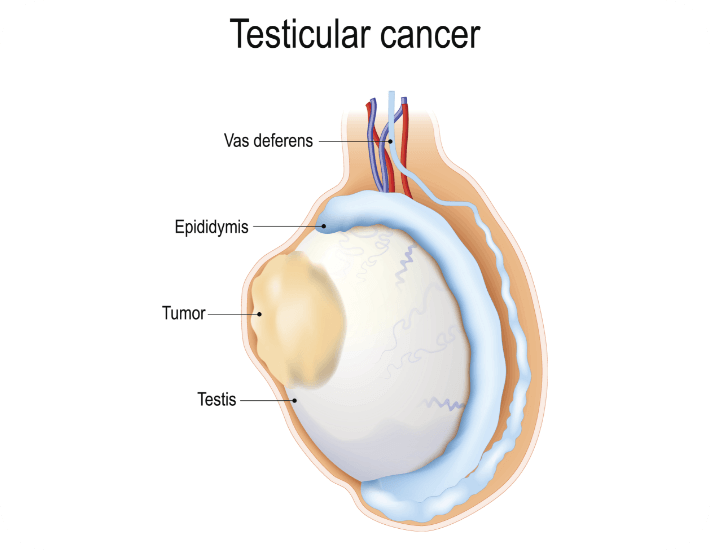Testicular Cancer
Testicular (testis) cancer stands as the most prevalent form of cancer among males aged 15-40. Thanks to modern treatments, its prognosis is excellent, boasting cure rates exceeding 95%, particularly when detected early. The primary indicator for diagnosis often lies in the detection of a lump within the testicle, typically firm and painless. The majority of testicular cancers originate from 'germ cells,' the cells responsible for sperm production.
There are two primary types of testicular cancer
Seminoma and Non-seminoma. Seminomas generally manifest in slightly older men and exhibit a less aggressive growth pattern compared to non-seminomas. Remarkably, approximately 75% of these tumours are localized within the testicle at the time of diagnosis, signifying that they have not yet spread to lymph nodes or other organs. This underscores the importance of early detection and emphasizes the favourable outcomes achievable with timely intervention and advanced treatment approaches.
Common Signs and Symptoms
- Lump or Swelling: The most common sign is a painless lump or swelling in one or both testicles.
- Discomfort or Pain: A feeling of heaviness, discomfort, or pain in the scrotum or lower abdomen.
- Changes in Testicular Size or Shape: Any noticeable changes in the size, shape, or consistency of the testicles.
- Pain or Discomfort in the Lower Abdomen or Groin: Discomfort, pain, or aching in the lower abdomen or groin area.
The importance of Testicular Self- Examination
It is crucial for every man to engage in regular testicular self-examination as the primary early indication of testicular cancer often presents as a lump within the testicle. Developing familiarity with the shape and texture of one's testes enables easy detection of any notable changes, including the emergence of a new lump. This self-examination is simple and can be conducted during or after a bath or shower, involving the gentle rolling of the testicle between the thumb and forefinger from top to bottom, with a focus on identifying irregularities or firmness. It is recommended to perform this self-examination approximately every six months, and any observed changes should be promptly reported to your local doctor for further assessment.
To investigate a testicular lump further, a medical professional may recommend an ultrasound scan of the testicles, coupled with the collection of blood for 'tumour markers'—specific proteins produced by certain testicular cancers and released into the bloodstream.
While many lumps discovered by individuals may turn out to be benign conditions, such as cysts in the structures surrounding the testes, it is of utmost importance for men to have these lumps thoroughly examined by a urologist to ensure accurate evaluation and appropriate guidance.
Risk Factors
- Age: Testicular cancer is most common in young and middle-aged men, typically between the ages of 15 and 40.
- Undescended Testicle: Men with a history of undescended testicles have an increased risk.
- Family History: Having a family member with a history of testicular cancer may elevate the risk.
- Race: Testicular cancer is more common in Caucasian men than in men of other racial or ethnic groups.

Aids in Diagnosis
Physical Examination: A thorough examination of the testicles and scrotum by a urologist.
Ultrasound and CT Scan
- Imaging tests, such as ultrasound, to visualize the testicles and detect any abnormalities.
- CT scans are used to assess if the cancer has spread to other parts of the body and as part of staging.
Blood Tests: Blood tests to measure tumour markers associated with testicular cancer.
Treatment Options
Radical Inguinal Orchidectomy
Confirmation of testicular cancer diagnosis requires the removal of the affected testicle, a procedure known as an orchidectomy. This surgical intervention is conducted in a hospital setting under general anaesthesia. The procedure involves a small incision in the groin, where the blood vessels leading to the testicle are carefully managed to prevent any potential spread of cancer cells to other parts of the body. Additionally, for cosmetic purposes, the insertion of a prosthetic testicle can be performed concurrently if desired.
Chemotherapy
Depending on the type, stage and grade of testis cancer, you may be referred on to a medical oncologist for consideration of further chemotherapy to reduce the chance of the testicular cancer re- occurring.